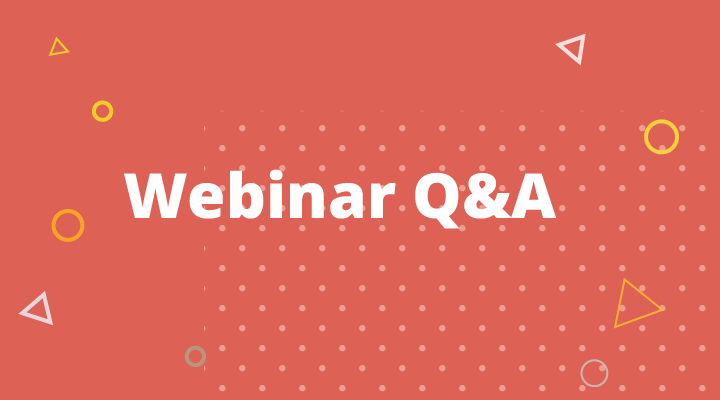In last week’s webinar, “Transform One Billion Records of Data into a Powerful Dashboard,” Syncfusion vice president Daniel Jebaraj took attendee questions about the Syncfusion Dashboard Platform in the Q&A portion of the presentation.
Below is a summary of this portion of the webinar:
Q. I tried to install the cluster agent on Windows 10, but received a message that it can only be installed on Windows 7 64bit.
A. We have supported Windows 10 since its first release. Please contact support and log the details so we can address this issue for you.
Q. Will you be making the slides and information available after the webinar?
A. Yes, we will send this to all registered participants in an email.
Q. I don’t have experience with big data. Can I use this Dashboard Platform?
A. Yes, the Syncfusion Big Data platform is actually one of the best learning tools available for Apache Hadoop. It makes it very easy to get started with Spark. Everything is self-contained with the single node pseudo-cluster (the best option to start with before deploying to a true cluster). Also, Pluralsight has a course on Hadoop for .NET developers that uses our platform for a lot of the samples in its tutorial. If you have access to Pluralsight Training, I recommend it.
Q. Do tutorials on this topic exist?
A. Yes, we have a whitepaper that covers a lot of this in detail. We will provide links to it and the data source in the email we’re sending out, as well as to our webinar that covers how to get started with big data. Again, the Pluralsight course is good for this, too. We also have e-books in our Succinctly series on Spark and Hadoop you may find helpful.
Q. We are a software company. If we build a dashboard based on big data, will each customer need a license?
A. No. Our licensing model is built around flat licenses. Whatever your needs are, if you get a flat license, it covers everybody. We do not charge per user. For specific licensing questions, please contact us.
Q. Can you tell me about the CAL pricing on your product page? Do you charge per user?
A. That pricing is provided for comparison purposes, but in reality, almost nobody licenses on a CAL basis from us: 99% or more of our licenses are flat licenses.
Q. Can the dashboard read from blob storage?
A. It can. Spark itself exposes a layer that works with Azure blobs, S3, and so forth. We’ll cover details in a future blog post.
Q. Can you use the development system in a production environment? We have an issue with government departments buying it before they want an initial deployment.
A. The cluster itself is not limited in any way. Because we’re not limiting the number of nodes, there’s no difference between the production and the development environment. The reason I mentioned a specific development environment in the demo was because we make it very easy to create a single node cluster or pseudo-cluster on your own laptop, but that’s a separate development use case. You don’t pay for that. It just creates a nice Hadoop environment. What I showed during the demo can also work with a local cluster. It’s easy to get started—you don’t need the resources of a real cluster, but you can certainly deploy the solution to a real cluster, and you don’t need any separate licenses for that.
Q. What version of Hadoop does it use?
A. We are currently using 2.7.2. The core distribution is built off Apache Hadoop. We have nothing to do with the other distributions.
Q. Can we install on our servers or on a client data center?
A. You can install wherever you want. We do not track machines or nodes.
Q. What do you think is the future of big data environments?
A. I can’t really say what might become popular. I can say that a stack like this, with Hadoop and Spark and the resources of something like our Dashboard front end, is extremely powerful. These tools would have cost millions of dollars even a couple of years ago. With the increased availability of data for organizations of all sizes, the time to take advantage of this is now.
Q. I’m currently using a SQL-based system, Oracle in this case, and I’m showing data on a data grid. Can I use your platform for this kind of application?
A. You can, but you have to consider your needs. As an example, we have customers who are using a relational system to collect logging data, but they can’t keep up with its growth, constantly adding bigger machines and dealing with the licensing fees associated with these. This will be a good use case for the Syncfusion Big Data Platform. There are other use cases where you are storing transactional data that may be more suitable for relational systems.
Whatever transactional or relational systems you’re running, you can bring all that data into a big data lake running on the Syncfusion Big Data Platform, and then you can do really nice reporting without stressing your production systems or having to offload data to an archive. You can keep it all in one place and report on it.
Q. Can we display these dashboards with controls from other vendors?
A. Absolutely, you do not have to use Syncfusion controls for the user interface.






